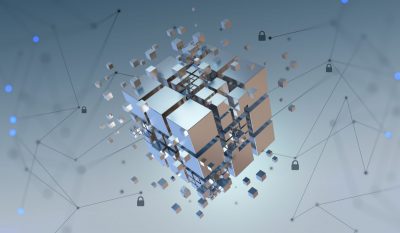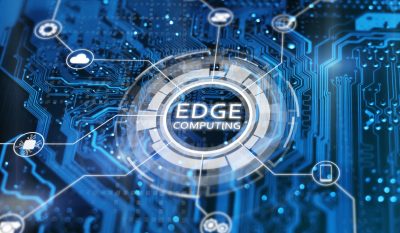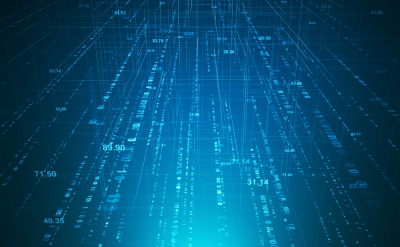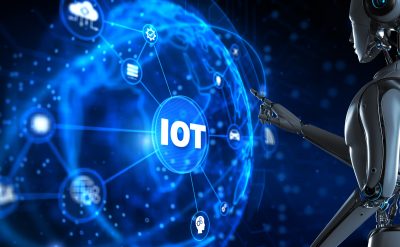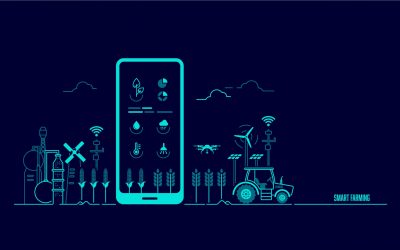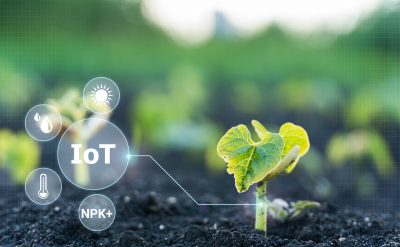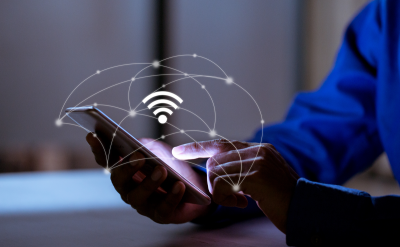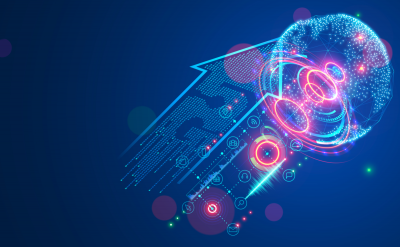The last decade saw the birth of Industry 4.0, and it has been booming since then. It is even much bigger than the industrial revolution and has been transforming businesses digitally with robust tools like robotics, automation, the Internet of Things, Artificial Intelligence (AI), analytics, and big data in their operations. The need for efficiency, agility, and intelligent manufacturing gave birth to Industry 4.0.
Businesses in the last decade have gone through a lot of trial-and-error methodologies to embrace the industrial revolution. However, it has reached its inflection point, and leaders now know the best practices to integrate IoT, Big Data, and analytics.
What is IoT
At first, it’s essential to understand what IoT is about. In simple terms, it’s all about connectivity. All physical objects are connected to the Internet so that they can be uniquely identified (by URI or Unique Resource Identifier) and can send/receive data by connecting to a network. IoT is also about information and communication. It constantly sends information about status, actions, sensor data, and more. Lastly, and most importantly, it’s about action and interaction. This means it’s much about connection and information sharing. The data generated is not just for storage purposes. It can be used for automation, which means computers can automatically use data to make decisions.
That’s a brief about IoT. Interesting, isn’t it? Let’s delve deeper.
What are the best tips to implement IoT?
It’s essential not just to understand how to implement IoT but also the purpose of implementation. It will not only help increase the ROI but allow you to explore opportunities for cost efficiency of your existing services, product, or production line. The industrial Internet of Things will help enrich your existing products and services by adding new features or even create business opportunities. We have prepared a guide of all the risks, challenges, and requirements of IoT implementation for you.
Understand your Business Goals:
If you lack knowledge, engineers, specialists, and experts can help you understand business goals and set objectives. They can help you understand the features you need on the IoT devices to execute the task. Moreover, they will also assist in analyzing if the Internet of Things needs an investment that you can recover sooner. The following few questions will help you define what you want to achieve by integrating the Internet of Things:
- What challenges are you planning to overcome?
- What goals do you want to achieve by overcoming these challenges?
- What is the most effective way to overcome the challenges?
Additionally, it is not recommended to implement the entire IoT system in one go. One must implement IoT in phases by capping it to the amount you spend monthly or yearly on process optimization.
Research Verified IoT Use Cases:
The Internet of Things is relatively a new concept but has evolved, developed, and established in certain areas. There is a surge in the number and variety of industrial Internet of things initiatives; hence there are several compelling use cases. Once you understand your business challenges and goals, you must check if they categorize under some of the most common IIoT use cases.
- Preventive Maintenance: Tracks the status of the amount of wear and tear of the parts, oxidization as a solution to prevent irreversible or costly damage.
- Automatic Refilling: Tracks fuel and oil levels as well as filters effectiveness so that they can be refilled or replaced before depletion to ensure continuous operations.
- Resource Micromanagement: Tracks the consumption of energy, water, and gas in real-time to avoid waste and make the most of the resources.
- Asset tracking and management: Asset tracking and management will help track your organization’s entire assets, including vehicles, objects, and workforce.
- Environmental monitoring: This will help you track the industrial environment like humidity, pollution, water and soil quality, temperature, and other aspects.
- Design for IoT: A new product line aimed to help clients, organizations, or industries designed to have an integrated IoT network.
- Access control and security: The IoT devices grant or restrict access to physical, digital, or network space to ensure security and maintain privacy.
- Process control and optimization: IIoT devices will help get valuable insights into process efficiency and implement it to enhance efficiency.
These cases mentioned above have already been tried and tested in a few organizations or industries and can be implemented easily. Once you identify your challenges, you should evaluate if that problem falls under the category of already established and tested IoT solutions, which will minimize your IoT implementation cost compared to the case when experiments and tests are needed.
Select the right hardware:
Once you decide to implement the Internet of things technology, you need to strategize which device or asset you should integrate into the IIoT network.
These devices might be basic tools or sensors that track the weight, volume, temperature, humidity, color, pressure, sound, vision, etc. The data collected on these tools or sensors must be shared over the Internet.
Hence, the secondary hardware that you will require is connection devices that are used to connect the data-gathering sensor or other hardware on your IoT network. Edge computers and actuators can be another set of hardware that you might need to achieve specific goals. Zigbee, Z-wave, and 6LoWPAN are some of the latest gateways and protocols designed for IoT purposes. But not all IoT devices execute on these different protocols. Hence, it is crucial to evaluate connectivity and interoperability before making a purchase decision.
Moreover, you might not even require implementing hardware; just modifications to the existing devices may be sufficient. Otherwise, you will have to replace the hardware designed for IIoT. Additionally, you need to ensure that the sensors are low energy consumption devices to ensure long-term operations without replacing the energy sources.
Choosing the IoT tools:
The Internet is the base of an IoT network. Hence, one must ensure fast internet bandwidth. The IIoT devices are constantly working on the task you assign them to increase your business efficiency.
Internet of things device is any device that is capable of being connected to the Internet and can assist in accomplishing the following task:
- Collect sensor data, evaluate it, and transfer the data to the respective endpoint.
- Receive and execute commands through the Internet to manage the actuator and accomplish tasks.
- Or accomplish both.
The earlier information given in the hardware step involves converting common devices into IoT devices by integrating sensors and other IoT devices, such as the development kit used for prototyping.
Many intelligent IoT-oriented devices allow the device to adjust to the users’ habits, predict their preferences and wishes, and notify them if they detect any problem. These intelligent IoT devices are made for consumer use to make smart homes, but this might be useful for you in some aspects as well.
Choosing an IoT platform:
An IoT platform is an algorithm that manages, centralizes, and processes every aspect of the IoT network and its connected devices. Connected devices collect data, send commands, and execute them via cloud integration. You can develop the IoT platform in-house or customize the best vendors tool as per your requirement. No matter the route for obtaining, it is the base of your network, and you will have to design everything around it. Additionally, you do not need to buy an advanced system before the prototyping stage, but you will require it for a long-term operation of the IoT implementation.
Furthermore, you need to ensure that if you update the IoT platform, you will have to update most of the software aspects of the implementation because the IoT software determines how the system handles the data and how everything communicates. Implementation of IoT is an expensive process.
Prototyping And Implementing
It is essential to gather your entire team and think about it thoroughly before starting the implementation process. Implementing the industrial Internet of things involves various departments and systems that interact throughout the process. People with different skillsets will be needed right from the inception to design, prototyping, implementation, and incrementation. The following are a few experts that you might have to interact with depending on your IoT needs:
- Computer Engineer: A computer engineer with expertise in designing and implementing firmware programs for embedded systems will help transfer and receive the sensor data.
- Software Engineer: You will need the expertise of a software engineer to design and implement algorithms to manage the network, API, and data collected.
- Electronic Engineer: An electronic engineer will design the circuit boards for your IoT system.
- Mechanical Engineer: In an industrial setting, a mechanical engineer with thorough knowledge of machinery and other mechanical components with their limitations will smoothen the implementation process.
- Mechatronic Engineer: They specialize in using sensors and their integration with machines and computers.
- Automation Engineer: This team can help you manage and automate production processes.
- IT Experts: A team of IT experts will assist in implementing internet networks.
- Manufacturing Experts: A manufacturing expert with a thorough knowledge of production processes and their limitations will assist in understanding the exact requirements.
- Telecommunication Specialists: A telecommunication specialist will manage different protocols, gateways, and other monetizing models.
Prototyping is a process wherein you use existing and less robust devices that can be attached and detached easily as per the requirement to evaluate what works and what does not. Post-implementation, you might have to get additional experts onboard to ensure smooth operations.
- Database systems expert to manage the entire database.
- Data scientists evaluate the collected data.
- Statistician to analyze data; control the data quality.
- Security officer to comply with internal policies or GDPR if required.
- Computer scientist to design and implement machine learning.
Collect relevant data:
If you have intricate requirements, you will need multiple sensors to keep an eye on everything. For instance, fuel, oil, integrity, and other sensors that you need. As a result, your IoT systems will generate a vast volume of data in real-time, which you need to keep track of. Usually, when data gets generated at such a huge amount in traditional settings, it gets discarded as soon as it is used. Because storing a huge volume of information will increase the IoT implementation costs.
Traditional methods to sensor usage were to use the data and then discard it. With new, robust technologies on data analysis, including Big Data and analytics with cheap data storage options like cloud storage, one does not have to delete the data once used. You can have a look at the best tips to integrate Big Data and Analytics into Industry 4.0. It is essential to collect relevant data to evaluate it and send it to the database to store it for as long as you want. Here, you can use applications to gather and compile the data analyst’s data to ensure the quality and efficiency of the process. As a result, it will help spot the challenges and loopholes in the system to overcome them with efficiency.
Each sensor will have its unique output port or format. The transmitted data, digital or analog format, will need to be converted to a specific format before sending it to the server for storage. It entirely depends on the IoT platform, IoT managing apps, database type, and technical expertise. The process of data gathering, and storing is continuous, along with applying it at the time of gathering if needed.
Implement cold and hot analytics:
For long-term decision-making, you can set up cold path analytics. This analytics process involves storing all or a part of the data collected by sensors that are interpreted by the computer and evaluated later on. It will help understand the status of your assets, devices, production, resources, and systems over time, including the data being gathered presently. The analysis is done by data scientists and Machine Learning software to spot the challenges in your process and make necessary changes to increase efficiency. Cold analytics will store your data for a long time to evaluate and reevaluate the database to understand the impact of the changes in the system.
The automation processes usually follow the hot analytics processes for the decisions that need to be made in real-time. Most commonly, hot analytics processes are implemented for safety measures. For instance, if specific security parameters exceed a certain threshold, the system will shut itself. You can preprogram it directly into the edge computer or circuit to reduce the lag between measurement and action.
Implement Machine Learning tools:
Machine learning tools in your IoT network will help evaluate the data in real-time to spot the patterns and trends in the database. As a result, make necessary changes to your process. Moreover, it will keep an eye on and notify you if any systems or devices require maintenance.
Wrapping it up:
Determining the workflow will help simplify the data flow and help in performing steps. This workflow will help you better picture the best ways to integrate Internet of things devices in your workflow. Identifying the goals and defining the states, events, and protocols will help streamline the selection of IoT devices!





